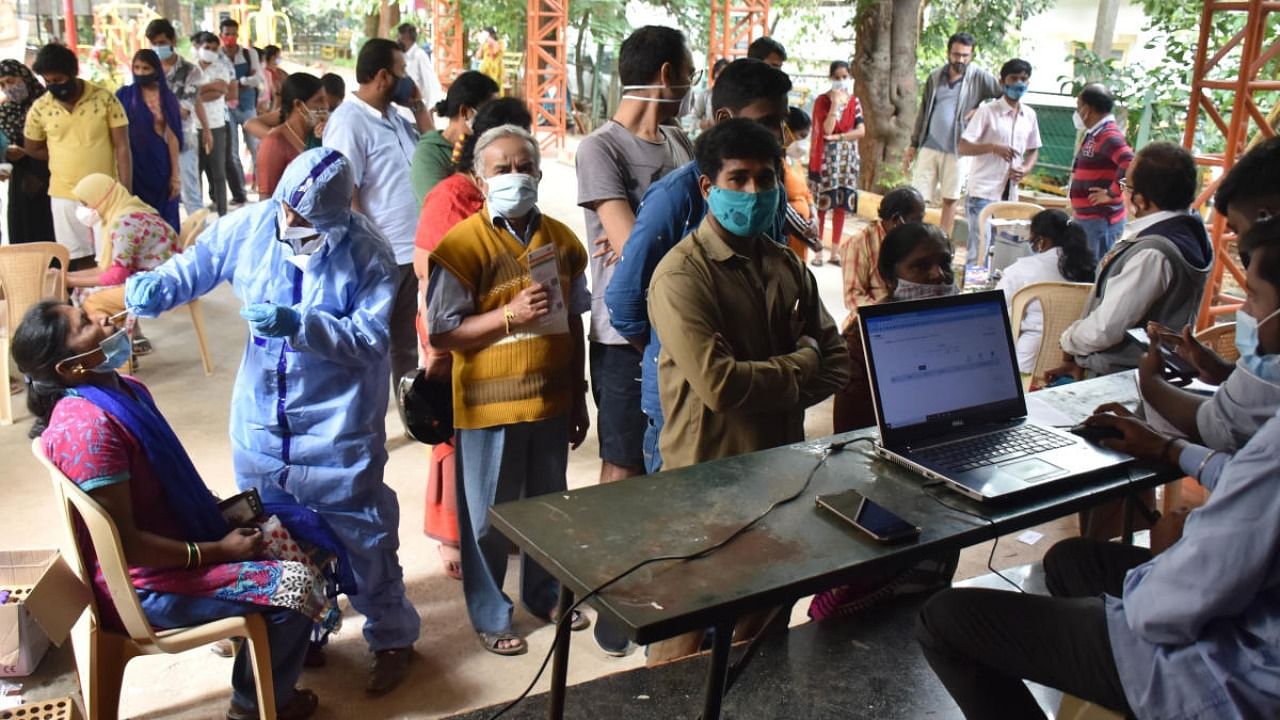
It was a sheer chance that the Omicron coronavirus variant was detected in a 46-year-old city doctor who has no history of recent overseas travel.
The anaesthesiologist’s sample was sent for genomic sequencing due to its high viral load, in accordance with a Health Department directive, said a senior medical officer at the government hospital in South Bengaluru where the doctor has been working for the past 15 years.
“Our doctor’s sample had a Ct value of 13. This prompted our microbiologist to send the sample for sequencing,” he said. “We have not treated any patients from Omicron-hit nations. If mutations occur in a certain country, the same can occur in other countries as well. They need not always be imported.”
Ct value, or cycle threshold value, indicates the number of cycles needed in the RT-PCR test to amplify the viral RNA to a detectable level. Only swab samples with a Ct value of less than 25 qualify for sequencing.
Despite the high viral load, the doctor’s symptoms were mild and he was treated at a private hospital. He has turned out to be India’s second Omicron patient. The first is a 66-year-old man who travelled from South Africa.
The anesthesiologist has not reported for work since November 20. As soon as he developed fever and body ache, he got himself tested. And once the result came, he has remained at home. His wife has also tested positive although their daughter’s Rapid Antigen Test (RAT) came back negative. She would be subjected to an RT-PCR test, the hospital official said.
The doctor and his wife are being admitted to the Bowring and Lady Curzon Hospital and would be treated like regular Covid patients, said Dr Manoj Kumar, the hospital’s dean.
The doctor developed symptoms on November 19 and tested positive on November 22. He did not come in contact with any patient, patient’s family or hospital staff after that. On Thursday, the hospital tested its 250 operation theatre staff and all have tested negative, the first official said.
One possible reason for the doctor’s infection could be his low antibody levels. Since its healthcare workers were vaccinated in February, the hospital recently tested the antibody levels of its 250 staff. “This doctor’s antibody levels were low,” the official said.
The doctor’s long absence from the hospital has helped avert the need to seal the medical facility or any part of it.
“The last time he was on our hospital premises was on November 19. The last surgery he was part of was on November 17. This covers both the early and late incubation periods,” the official said.
The fact that he is an anesthesiologist has also helped. “He does not come in direct contact with the patient. There’s no risk to the hospital. But his case proves we need booster shots for our healthcare workers with waning antibodies,” the officer said.
Two of the doctor’s 13 primary contacts and three of his 205 secondary contacts have tested positive and all are in BBMP-monitored isolation, BBMP Chief Commissioner Gaurav Gupta said without disclosing the location.
The hospital official said two other staff members tested positive on the same day as did the anesthesiologist.
“We do not know if we can consider the two doctors as the anaesthesiologist’s contacts,” the official said, adding that both had tested positive much before the hospital tested its 250 operation theatre staff. “They must have contracted the infection elsewhere,” he said.
Both the doctors have mild symptoms.
Check out latest coronavirus-related videos from DH:
